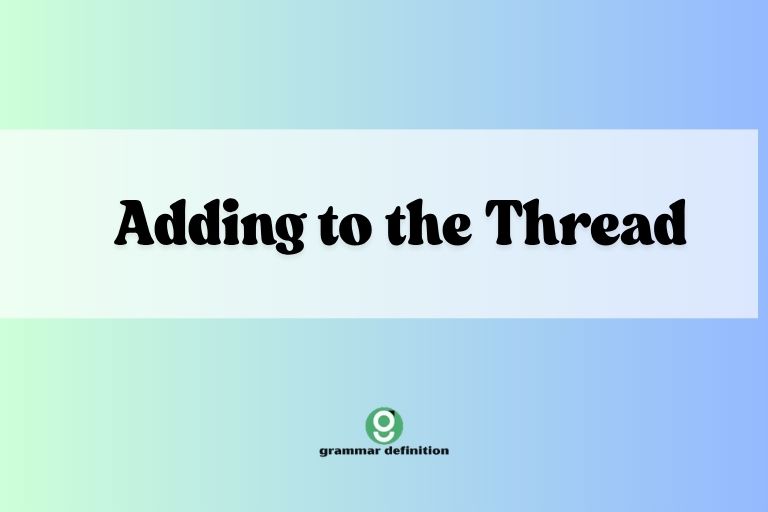Mastering Irregular Plural Nouns in English Grammar

Understanding irregular plural nouns is crucial for achieving fluency and accuracy in English. Unlike regular nouns that simply add “-s” or “-es” to form their plural, irregular nouns follow unique and often unpredictable patterns.
Mastering these exceptions is essential for both writing and speaking, as errors in pluralization can lead to miscommunication and a perception of lower language proficiency. This article provides a comprehensive guide to irregular plural nouns, covering their definitions, types, usage rules, common mistakes, and practice exercises.
Whether you’re an ESL student, a native speaker looking to refine your grammar, or a teacher seeking resources, this guide will equip you with the knowledge and tools to confidently navigate the complexities of irregular plural nouns.
Table of Contents
- Introduction
- Definition of Irregular Plural Nouns
- Structural Breakdown
- Types and Categories of Irregular Plural Nouns
- Examples of Irregular Plural Nouns
- Usage Rules for Irregular Plural Nouns
- Common Mistakes with Irregular Plural Nouns
- Practice Exercises
- Advanced Topics
- Frequently Asked Questions (FAQ)
- Conclusion
Definition of Irregular Plural Nouns
Irregular plural nouns are nouns that do not form their plural by adding the standard suffixes “-s” or “-es.” Instead, they undergo changes in their spelling, pronunciation, or both. These nouns often have historical roots in older forms of English or other languages, such as Latin and Greek.
Recognizing and using irregular plural nouns correctly is essential for clear and effective communication in English. Unlike regular plurals, there are no universal rules for forming irregular plurals; each noun must be learned individually or categorized based on shared patterns.
The function of irregular plural nouns is the same as that of regular plural nouns: to indicate that there is more than one of something. However, their irregular formation sets them apart and requires specific attention.
Irregular nouns can appear in any context where plural nouns are needed, from everyday conversation to formal writing. Mastering them demonstrates a strong command of English grammar and enhances overall language proficiency.
Structural Breakdown
The structural changes in irregular plural nouns can be categorized into several types. Some nouns change their internal vowels (e.g., foot to feet), while others change their endings (e.g., child to children). Some nouns, particularly those of Latin or Greek origin, retain their original plural forms (e.g., criterion to criteria). Additionally, some nouns remain the same in both singular and plural forms (e.g., sheep). Understanding these different types of structural changes is crucial for correctly identifying and using irregular plural nouns.
The patterns are not always consistent, and many exceptions exist. For instance, while many nouns ending in “-f” or “-fe” change to “-ves” in the plural (e.g., life to lives), some simply add “-s” (e.g., chief to chiefs). Therefore, memorization and consistent practice are necessary to master these irregularities. Analyzing the historical origins of some irregular nouns can provide insights into their unusual plural forms, but this is not always a reliable method.
Types and Categories of Irregular Plural Nouns
Irregular plural nouns can be grouped into several categories based on the type of change they undergo when forming the plural. Understanding these categories can help learners identify patterns and remember the correct plural forms.
Nouns Changing Vowel Sounds
This category includes nouns that change one or more of their internal vowel sounds when forming the plural. This is one of the most common types of irregular plural formation.
Examples include:
- foot -> feet
- tooth -> teeth
- goose -> geese
- man -> men
- woman -> women
Nouns Ending in -f or -fe
Many nouns ending in “-f” or “-fe” change the “f” to “v” and add “-es” to form the plural.
Examples include:
- life -> lives
- wife -> wives
- knife -> knives
- leaf -> leaves
- wolf -> wolves
However, there are exceptions where the plural is formed by simply adding “-s”:
- chief -> chiefs
- roof -> roofs
- cliff -> cliffs
Nouns of Latin or Greek Origin
Many nouns borrowed from Latin or Greek retain their original plural forms.
Examples include:
- radius -> radii
- nucleus -> nuclei
- curriculum -> curricula
- criterion -> criteria
- phenomenon -> phenomena
- analysis -> analyses
- thesis -> theses
- hypothesis -> hypotheses
- index -> indices or indexes
- matrix -> matrices or matrixes
Nouns with No Change in Plural Form
Some nouns have the same form in both singular and plural.
Examples include:
- sheep -> sheep
- deer -> deer
- fish -> fish (or fishes, when referring to different species)
- species -> species
- aircraft -> aircraft
- series -> series
Nouns with Irregular Endings
This category includes nouns that form their plural with unique and unpredictable endings.
Examples include:
- child -> children
- ox -> oxen
- brother -> brothers (related by blood) / brethren (members of an organization)
Examples of Irregular Plural Nouns
This section provides extensive examples of irregular plural nouns, organized by category, to illustrate their usage in sentences.
The following table provides examples of nouns that change their vowel sounds in the plural form. Notice how the internal vowel shifts to indicate plurality.
| Singular | Plural | Example Sentence |
|---|---|---|
| Foot | Feet | He has large feet. |
| Tooth | Teeth | She brushed her teeth. |
| Goose | Geese | The geese flew south for the winter. |
| Man | Men | The men gathered for the meeting. |
| Woman | Women | The women organized a charity event. |
| Louse | Lice | The children were checked for lice. |
| Mouse | Mice | The mice scurried across the floor. |
| Dwarf | Dwarfs or dwarves | The seven dwarfs lived in the forest. |
| Brother | Brothers (blood relatives) or Brethren (members of an organization) | My brothers are coming to visit. The brethren met for their annual conference. |
| Penny | Pennies (individual coins) or Pence (amount of money) | I found some pennies on the ground. The book cost five pence. |
| Die | Dice | He rolled the dice. |
| Person | People | Many people attended the concert. |
| Child | Children | The children played in the park. |
| Ox | Oxen | The oxen pulled the heavy cart. |
| Datum | Data | The data was carefully analyzed. |
| Addendum | Addenda | Several addenda were added to the report. |
| Memorandum | Memoranda | The manager sent out memoranda to all employees. |
| Genus | Genera | The scientist studied different genera of plants. |
| Alumnus | Alumni | The university invited its alumni to the reunion. |
| Fungus | Fungi | The biologist studied various types of fungi. |
| Syllabus | Syllabi | The professor handed out the course syllabi. |
| Focus | Foci | The foci of the research were clearly defined. |
| Hippopotamus | Hippopotamuses or Hippopotami | The hippopotamuses or hippopotami bathed in the river. |
| Octopus | Octopuses or Octopi | The octopuses or octopi changed color to camouflage themselves. |
The following table provides examples of nouns ending in “-f” or “-fe” that change to “-ves” in the plural, as well as exceptions that simply add “-s”.
| Singular | Plural | Example Sentence |
|---|---|---|
| Life | Lives | They lived long and happy lives. |
| Wife | Wives | The wives supported their husbands. |
| Knife | Knives | He sharpened the knives. |
| Leaf | Leaves | The leaves changed color in the fall. |
| Wolf | Wolves | The wolves howled at the moon. |
| Thief | Thieves | The thieves stole the painting. |
| Shelf | Shelves | The books were arranged on the shelves. |
| Half | Halves | He divided the apple into halves. |
| Loaf | Loaves | She baked several loaves of bread. |
| Self | Selves | They looked at their selves in the mirror. |
| Scarf | Scarves or Scarfs | She wore colorful scarves in the winter. |
| Chief | Chiefs | The tribal chiefs met to discuss the treaty. |
| Roof | Roofs | The roofs of the houses were covered in snow. |
| Cliff | Cliffs | The seagulls nested on the cliffs. |
| Proof | Proofs | They needed more proofs before making a decision. |
| Safe | Safes | The valuables were locked in the safes. |
| Grief | Griefs | She shared her griefs with her friend . |
| Ostrich | Ostriches | The ostriches roamed the savanna. |
| Graph | Graphs | The report included several graphs. |
| Photograph | Photographs | She collected old photographs. |
| Autograph | Autographs | The fans asked for the celebrity’s autographs. |
| Trough | Troughs | The animals drank from the troughs. |
| Dwarf | Dwarfs | The garden was decorated with statues of dwarfs. |
This table provides examples of nouns of Latin or Greek origin that retain their original plural forms. Note the specific endings associated with each plural form.
| Singular | Plural | Example Sentence |
|---|---|---|
| Radius | Radii | The radii of the circles were different. |
| Nucleus | Nuclei | The nuclei of the cells were clearly visible. |
| Curriculum | Curricula | The school offered diverse curricula. |
| Criterion | Criteria | The criteria for judging were clearly defined. |
| Phenomenon | Phenomena | The scientist studied natural phenomena. |
| Analysis | Analyses | The analyses revealed important insights. |
| Thesis | Theses | The students presented their theses. |
| Hypothesis | Hypotheses | The scientists tested their hypotheses. |
| Index | Indices or Indexes | The book had several indices or indexes. |
| Matrix | Matrices or Matrixes | The matrices were used for data analysis. |
| Apex | Apices or Apexes | The apices of the pyramids were visible from afar. |
| Vertex | Vertices or Vertexes | The vertices of the triangle were clearly marked. |
| Formula | Formulae or Formulas | The students learned various mathematical formulae. |
| Nebula | Nebulae or Nebulas | The astronomer studied distant nebulae. |
| Larva | Larvae or Larvas | The biologist examined the larvae under the microscope. |
| Automaton | Automata or Automatons | The exhibition featured a collection of antique automata. |
| Bureau | Bureaux or Bureaus | The government established several bureaux to handle the workload. |
| Cactus | Cacti or Cactuses | The desert was filled with various species of cacti. |
| Erratum | Errata | The publisher included a list of errata in the book. |
| Millennium | Millennia | The artifact was thousands of millennia old. |
| Phalanx | Phalanges | The doctor examined the patient’s phalanges. |
| Symposium | Symposia or Symposiums | The university hosted several academic symposia. |
| Tempo | Tempi or Tempos | The conductor adjusted the tempi of the music. |
The subsequent table showcases nouns that do not change form in the plural. These nouns remain identical whether referring to one or multiple entities.
| Singular | Plural | Example Sentence |
|---|---|---|
| Sheep | Sheep | The sheep grazed in the meadow. |
| Deer | Deer | The deer ran through the forest. |
| Fish | Fish (or Fishes) | We caught several fish in the lake. (or) There are many different fishes in the ocean. |
| Species | Species | This species is endangered. |
| Aircraft | Aircraft | Several aircraft were parked at the airport. |
| Series | Series | The TV series was very popular. |
| Swine | Swine | The farmer raised swine. |
| Offspring | Offspring | The birds protected their offspring. |
| Headquarters | Headquarters | The company’s headquarters are located downtown. |
| Crossroads | Crossroads | The town was situated at a crossroads. |
| Gallows | Gallows | The old western movie displayed gallows in the town square. |
| Corps | Corps | Several corps were deployed to the region. |
| Means | Means | The means of transportation were limited. |
| Works | Works | Shakespeare’s works are studied in schools. |
| Swiss | Swiss | Many Swiss people enjoy skiing. |
| Chinese | Chinese | The restaurant served authentic Chinese cuisine. |
| Japanese | Japanese | The Japanese are known for their politeness. |
| Portuguese | Portuguese | The Portuguese explorers sailed around the world. |
| Vietnamese | Vietnamese | The Vietnamese celebrated Tet, their New Year. |
| Moose | Moose | The moose grazed near the river. |
| Grouse | Grouse | The hunter spotted several grouse in the woods. |
| Cod | Cod | The fisherman caught a lot of cod. |
| Trout | Trout | The stream was filled with trout. |
| Salmon | Salmon | The salmon swam upstream to spawn. |
Usage Rules for Irregular Plural Nouns
The primary rule for using irregular plural nouns is to memorize their correct forms. Since they do not follow consistent patterns, familiarity through reading and practice is crucial.
Always double-check the spelling of irregular plurals, especially in formal writing.
When using nouns of Latin or Greek origin, be mindful of the context. While some have become accepted with regular English pluralizations (e.g., indexes instead of indices), using the original plural form often lends a more formal or academic tone. Consistency is key: choose one form and stick to it throughout a piece of writing.
With nouns that have no change in plural form, pay attention to the verb agreement. Use plural verbs with these nouns to indicate that you are referring to more than one. For example: “The sheep are grazing” (plural) versus “The sheep is grazing” (singular).
Collective nouns like “people” always take a plural verb, even though “people” represents a group. “The people are happy.”
Common Mistakes with Irregular Plural Nouns
One common mistake is applying regular pluralization rules to irregular nouns. For example, incorrectly pluralizing “child” as “childs” instead of “children.” Another frequent error is using the singular form when the plural is required, such as saying “one criteria” instead of “one criterion.”
Another common mistake involves nouns ending in “-f” or “-fe.” Learners may forget to change the “f” to “v” and add “-es,” resulting in incorrect forms like “lifes” instead of “lives.” It’s also easy to confuse nouns that have no change in plural form, leading to errors in verb agreement. For instance, saying “The sheep is grazing” when referring to multiple sheep.
Here are some examples of common mistakes and their corrections:
| Incorrect | Correct | Explanation |
|---|---|---|
| Childs | Children | “Child” is an irregular noun that forms its plural as “children.” |
| Foots | Feet | “Foot” changes its vowel sound to form the plural “feet.” |
| Mouses | Mice | “Mouse” changes its vowel sound to form the plural “mice.” |
| Wifes | Wives | Nouns ending in “-fe” often change to “-ves” in the plural. |
| Sheeps | Sheep | “Sheep” has the same form in both singular and plural. |
| Deers | Deer | “Deer” has the same form in both singular and plural. |
| One criteria | One criterion | “Criterion” is the singular form; “criteria” is the plural. |
| The fish are swimming | The fish is swimming. | If only one fish is swimming, use the singular form. |
| The data is incorrect. | The data are incorrect. | “Data” is the plural form of “datum” and takes a plural verb. |
| The leafs are green. | The leaves are green. | “Leaf” changes to “leaves” in the plural. |
| I saw two goose. | I saw two geese. | “Goose” changes to “geese” in the plural. |
Practice Exercises
Test your knowledge of irregular plural nouns with these exercises. Fill in the blanks with the correct plural form of the noun in parentheses.
Exercise 1:
| Question | Answer |
|---|---|
| 1. The farmer had many ________ (sheep) in the field. | sheep |
| 2. The dentist checked my ________ (tooth) carefully. | teeth |
| 3. The ________ (child) played happily in the park. | children |
| 4. The hunter spotted two ________ (deer) in the woods. | deer |
| 5. The library had several ________ (thesis) on the subject. | theses |
| 6. The recipe called for two ________ (loaf) of bread. | loaves |
| 7. The scientist studied different ________ (species) of birds. | species |
| 8. The carpenter sharpened his ________ (knife). | knives |
| 9. The flock of ________ (goose) flew overhead. | geese |
| 10. The ________ (woman) organized the event. | women |
Exercise 2:
| Question | Answer |
|---|---|
| 1. The report included several ________ (analysis) of the data. | analyses |
| 2. The ________ (wolf) howled at the moon. | wolves |
| 3. The gardener swept up the fallen ________ (leaf). | leaves |
| 4. The museum displayed ancient ________ (artifact). | artifacts |
| 5. The judge set strict ________ (criterion) for the competition. | criteria |
| 6. The ________ (aircraft) took off on time. | aircraft |
| 7. The ________ (mouse) scurried across the floor. | mice |
| 8. The ________ (radius) of the circles were different. | radii |
| 9. The ________ (chief) of the tribe met to discuss peace. | chiefs |
| 10. The box contained several ________ (die). | dice |
Exercise 3:
| Question | Answer |
|---|---|
| 1. The ________ (alumnus) of the university gathered for a reunion. | alumni |
| 2. The doctor examined the patient’s ________ (phalanx). | phalanges |
| 3. The scientist studied different types of ________ (fungus). | fungi |
| 4. The professor handed out the course ________ (syllabus). | syllabi |
| 5. The ________ (hippopotamus) bathed in the river. | hippopotamuses or hippopotami |
| 6. The art gallery displayed several of the artist’s ________ (works). | works |
| 7. The explorer ventured into unknown ________ (crossroads). | crossroads |
| 8. The ________ (Swiss) are known for their watchmaking skills. | Swiss |
| 9. The ________ (salmon) swam upstream to spawn. | salmon |
| 10. The ________ (memorandum) were distributed to all employees. | memoranda |
Advanced Topics
For advanced learners, exploring the etymology of irregular plural nouns can provide a deeper understanding of their forms. Many irregular plurals have roots in Old English, Latin, or Greek, and their unusual formations reflect the grammatical rules of those languages.
For example, the plural of “formula” can be either “formulae” (Latin) or “formulas” (English adaptation). Understanding these origins can help learners appreciate the evolution of the English language.
Furthermore, some nouns have multiple plural forms with different meanings or connotations. For example, “brother” can be pluralized as “brothers” (referring to siblings) or “brethren” (referring to members of a religious or fraternal order).
Recognizing these nuances can enhance precision and sophistication in writing and speaking.
Another complex area involves the use of collective nouns. While some collective nouns always take a plural verb (e.g., “people”), others can take either a singular or plural verb depending on whether the group is considered as a single unit or as individual members (e.g., “The team is winning” vs.
“The team are arguing”). Mastering these distinctions requires careful attention to context and meaning.
Frequently Asked Questions (FAQ)
Q1: Why do irregular plural nouns exist?
Irregular plural nouns exist because English is a language that has evolved over centuries, incorporating elements from various other languages, including Old English, Latin, and Greek. These older languages had different rules for pluralization, and many of those original forms have been retained in modern English as irregular plurals.
These forms often resist the standardization of adding “-s” or “-es,” preserving their historical linguistic character.
Q2: Is there a way to predict irregular plural forms?
Unfortunately, there is no foolproof way to predict irregular plural forms. While some patterns exist within certain categories (e.g., nouns ending in “-f” or “-fe”), there are always exceptions.
The best approach is to memorize the common irregular plurals and to consult a dictionary when unsure. Recognizing the etymological origins of some nouns can provide clues, but this is not always reliable.
Q3: Are some irregular plural forms becoming obsolete?
Yes, some irregular plural forms are becoming less common in modern English, with regularized forms gaining acceptance. For example, “indexes” is often used instead of “indices,” and “formulas” is frequently used instead of “formulae.” However, using the traditional irregular forms can still lend a more formal or academic tone to writing.
The choice often depends on the context and audience.
Q4: How can I improve my knowledge of irregular plural nouns?
To improve your knowledge of irregular plural nouns, focus on consistent exposure and practice. Read widely, paying attention to how plural nouns are used in context.
Create flashcards or use online resources to memorize the common irregular forms. Practice writing and speaking, and actively seek feedback on your usage.
The more you encounter and use these nouns, the more natural they will become.
Q5: What is the difference between “fish” and “fishes”?
The word “fish” is typically used as both the singular and plural form when referring to multiple fish of the same species. “Fishes” is used less frequently and usually refers to multiple fish of different species.
For example, “I saw three fish in the pond” (same species) versus “The aquarium contained many different fishes” (different species).
Q6: When should I use “brothers” versus “brethren”?
“Brothers” is the standard plural form of “brother” when referring to siblings or male relatives. “Brethren” is an archaic form that is now primarily used to refer to members of a religious or fraternal order.
For example, “I have three brothers” versus “The brethren of the church gathered for a meeting.”
Q7: How do I handle compound nouns with irregular plurals?
For most compound nouns, the plural is formed by adding “-s” to the principal noun. If the principal noun is irregular, then it follows its irregular plural form.
For example, “mother-in-law” becomes “mothers-in-law,” and “passer-by” becomes
“passers-by.” When in doubt, consulting a dictionary is always a good practice to ensure accuracy.
Conclusion
Mastering irregular plural nouns is an essential aspect of English grammar that enhances both written and spoken communication. While these nouns may seem daunting due to their unpredictable forms, consistent study, practice, and exposure can significantly improve your proficiency.
By understanding the different types and categories of irregular plurals, recognizing common mistakes, and utilizing available resources, you can confidently navigate the complexities of English pluralization. Embrace the challenge, and with time and effort, irregular plural nouns will become a natural part of your linguistic toolkit.






